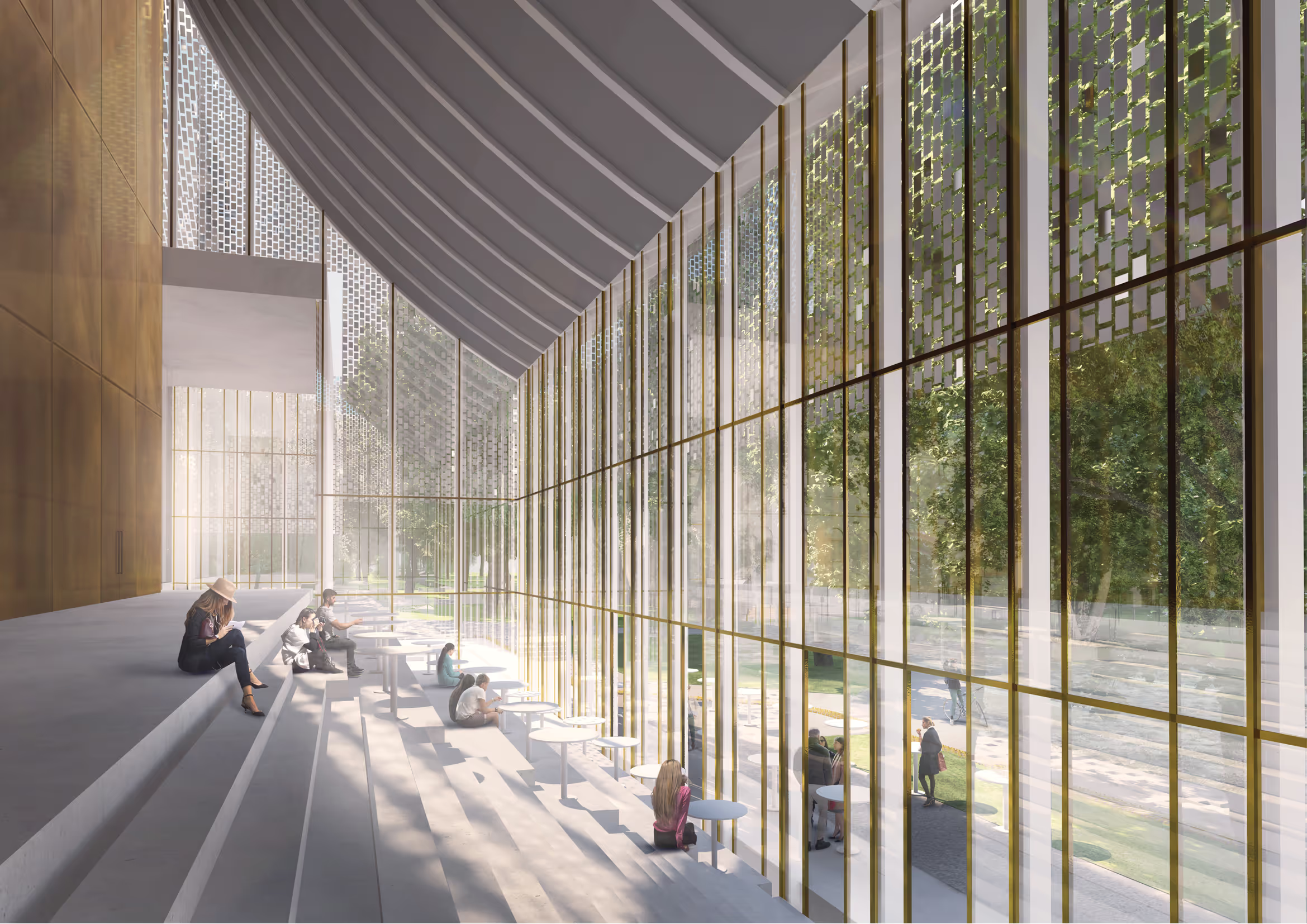Latvian National Theatre
The National Theatre building symbolises the founding of the Latvian state, Latvia’s first centenary. The new building symbolises modern Latvian identity – Latvia’s next centenary, whose values are naturalness, sensitivity and openness. Being rooted in the cultural space of Northern Europe, being sensitive to the environment and history makes our existence deeper and more meaningful, while being open to the world opens up new horizons and allows our culture to develop. By preserving the significance of the historic theatre building and emphasising the potential of the landscape, the project aims to integrate the historic building, the new building, the city canal promenade and the Kronvalds Park area into a single, logistically functioning structure.
The architectural image of the new building is sensitive to history and fits in with the surrounding buildings and the greenery of the canal promenade. The roof forms recede in response to the existing tree canopy, providing solar access to the park and responding to the baroque roofline of the historic theatre building. An uplifting, ethereal sense of artistic presence is created by the decorative finishes on the roof of the new building – solemnly shining polished metal plates reflecting the sky and the sun. The architecture and functionality of the building show that the new theatre is open to the urban environment and is not afraid to be in touch with its audience. The theatre goes out into the streets, squares and parks, feels the influence of the modern world and participates in global processes, thus enriching national culture. The large glass windows of the public space connect the theatre to the urban environment, allowing us to touch the mystery of the theatre.
The core of the theatre – the performance, rehearsal and workshop spaces – is open to Kronvalds Boulevard, becoming a living theatre that can be seen on the tram or walking along the boulevard. The project includes an amphitheatre for open-air performances and concerts on the canal embankment, extending the creative space beyond the walls of the building, a new boat dock, easy access to the theatre and significant environmental accessibility improvements.
Authors: MARK Arhitekti , Mailitis Architects, ALPS











